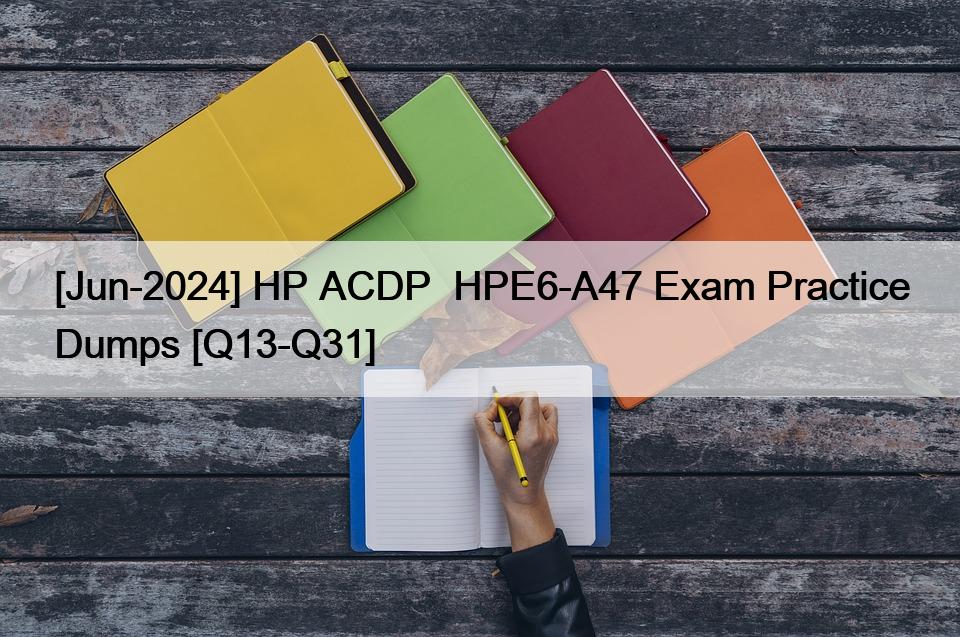|
This page was exported from Actual Test Materials
[ http://blog.actualtests4sure.com ] Export date: Fri Nov 15 20:43:25 2024 / +0000 GMT |
[Jun-2024] HP ACDP HPE6-A47 Exam Practice Dumps [Q13-Q31] [Jun-2024] HP ACDP HPE6-A47 Exam Practice Dumps 2024 HPE6-A47 Premium Files Test pdf - Free Dumps Collection HP HPE6-A47 (Aruba Certified Design Professional) Exam is a certification exam that tests the knowledge and skills of professionals in designing and implementing Aruba WLAN solutions. HPE6-A47 exam assesses the ability of candidates to evaluate business requirements, design Aruba solutions, and implement them effectively. The HPE6-A47 exam is designed for WLAN architects, engineers, and consultants who want to demonstrate their proficiency in Aruba WLAN design and deployment. HPE6-A47 certification exam is intended for IT professionals who have experience in designing complex wireless network solutions using Aruba technologies. HPE6-A47 exam is designed to test the candidate's knowledge and skills in areas such as network design, network planning, network troubleshooting, and network optimization.
Get ready to pass the HPE6-A47 Exam right now using our HP ACDP Exam Package: https://www.actualtests4sure.com/HPE6-A47-test-questions.html |
|
Post date: 2024-06-24 16:36:35 Post date GMT: 2024-06-24 16:36:35 Post modified date: 2024-06-24 16:36:35 Post modified date GMT: 2024-06-24 16:36:35 |